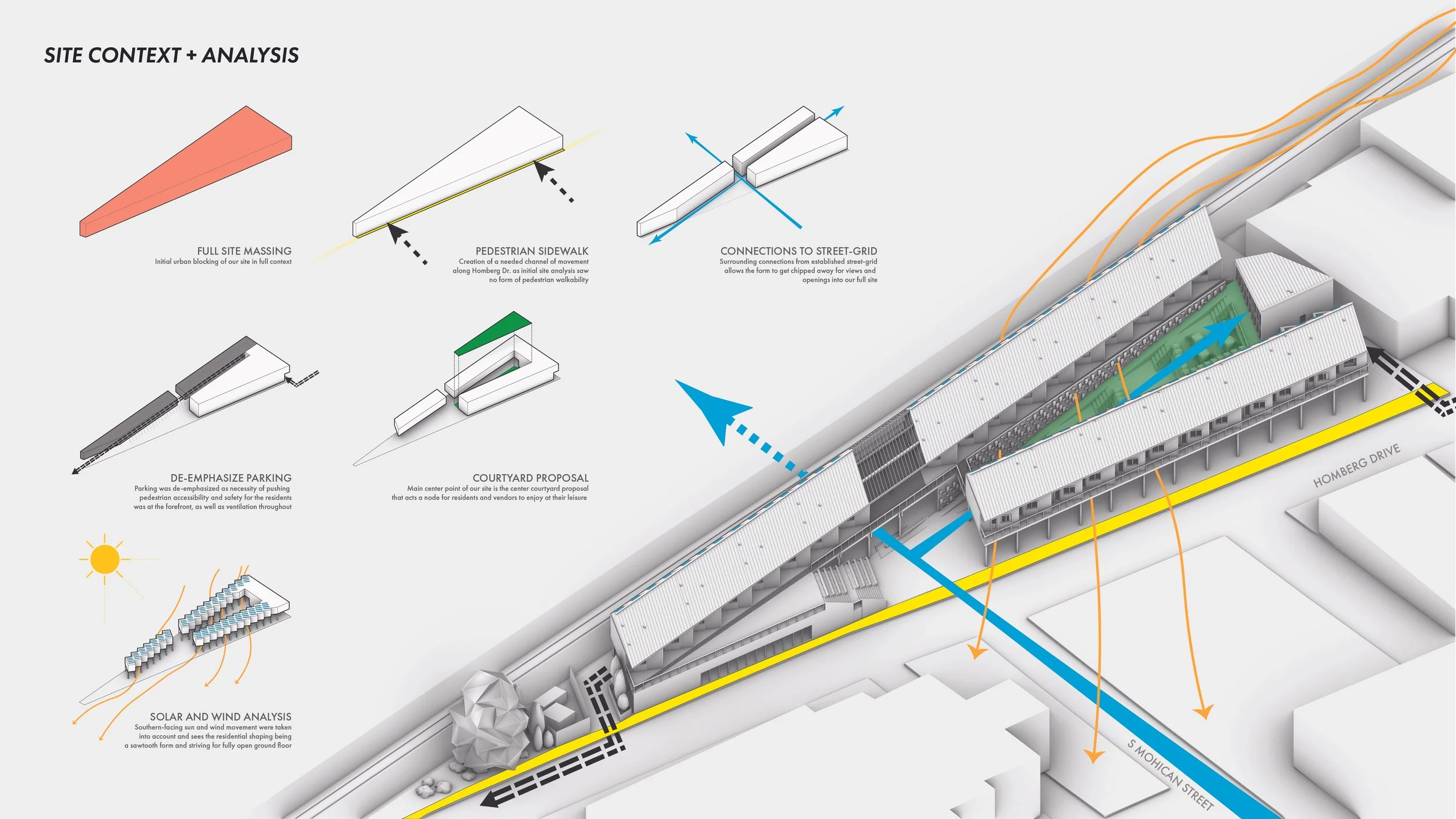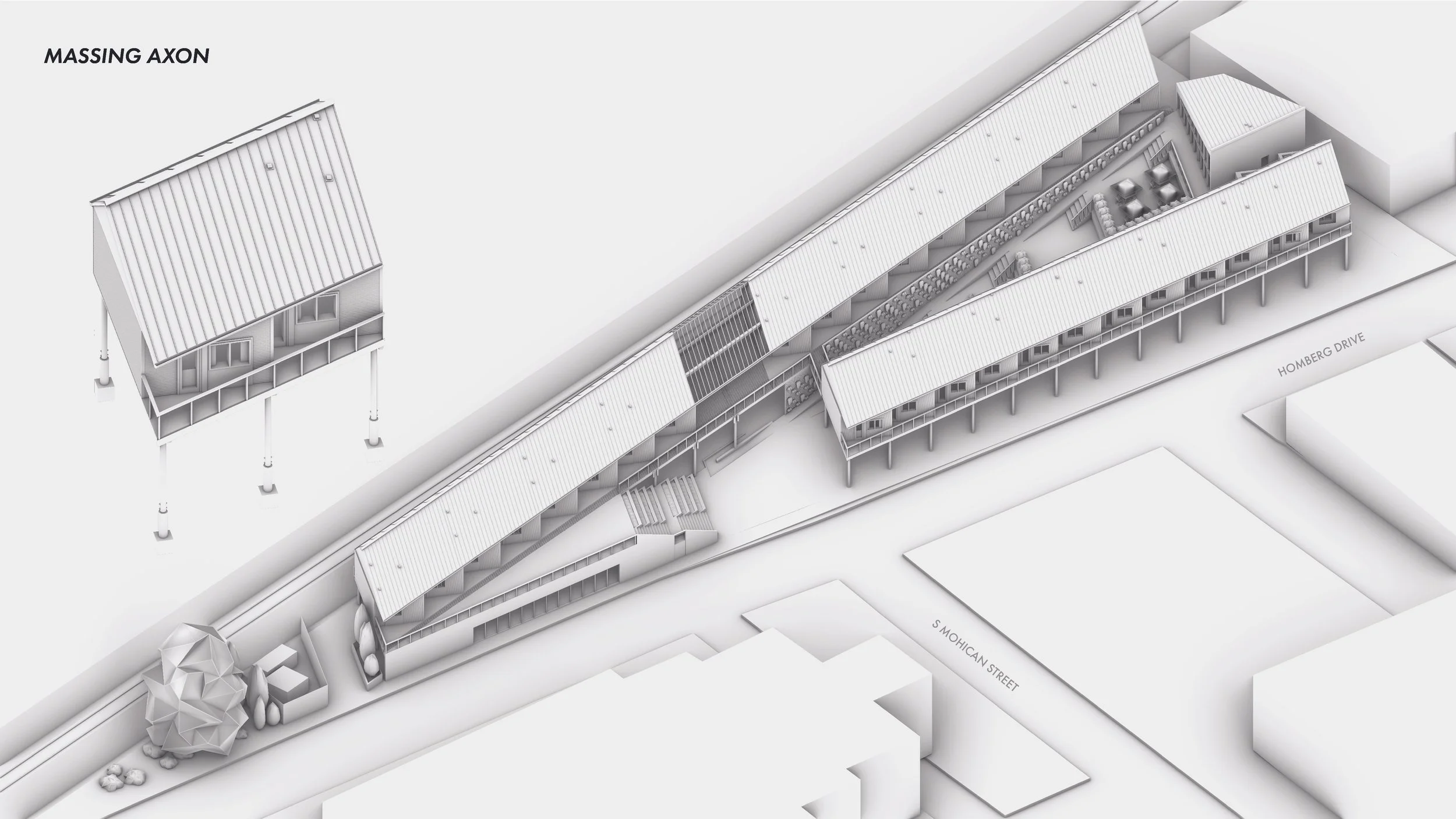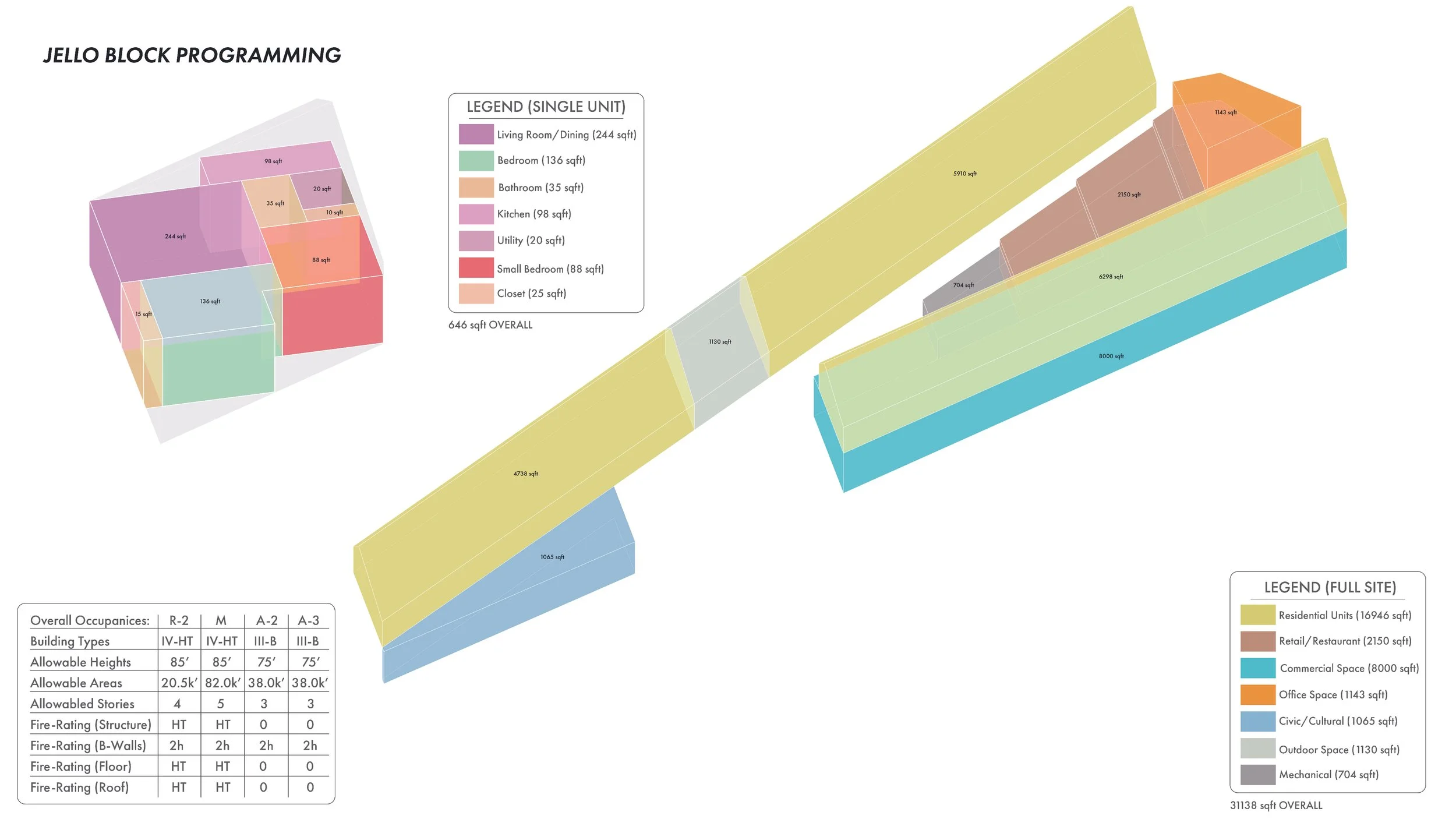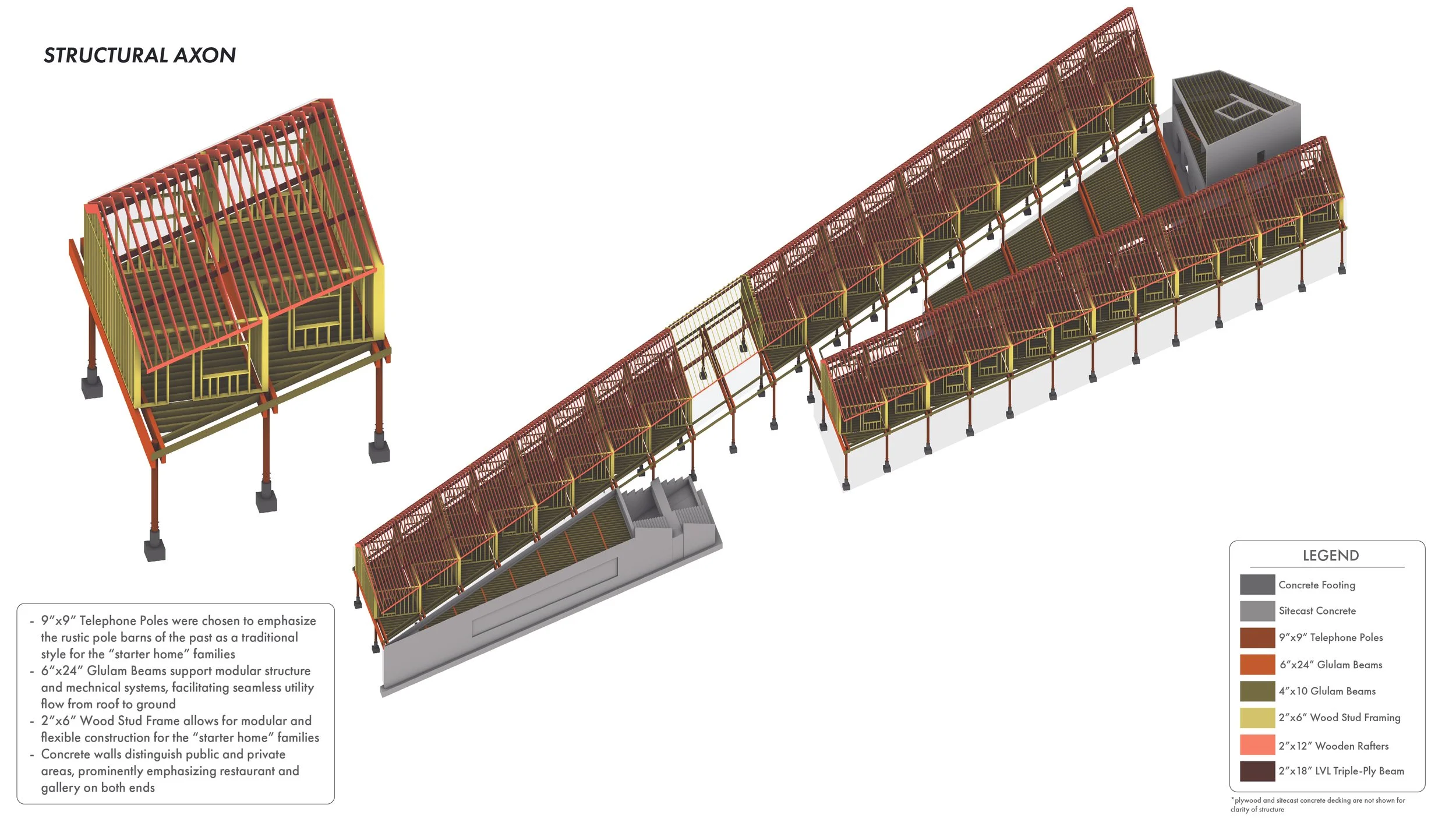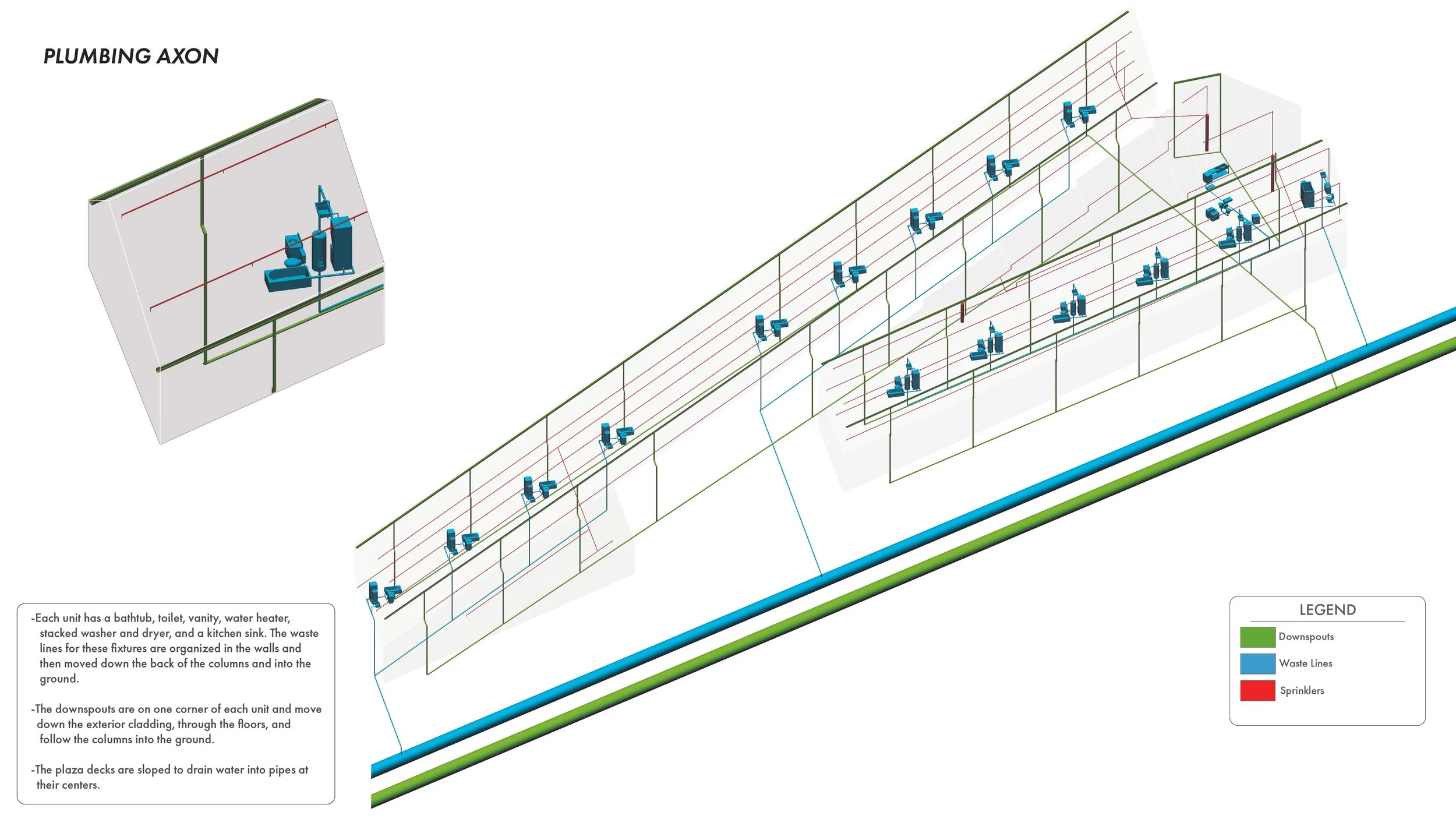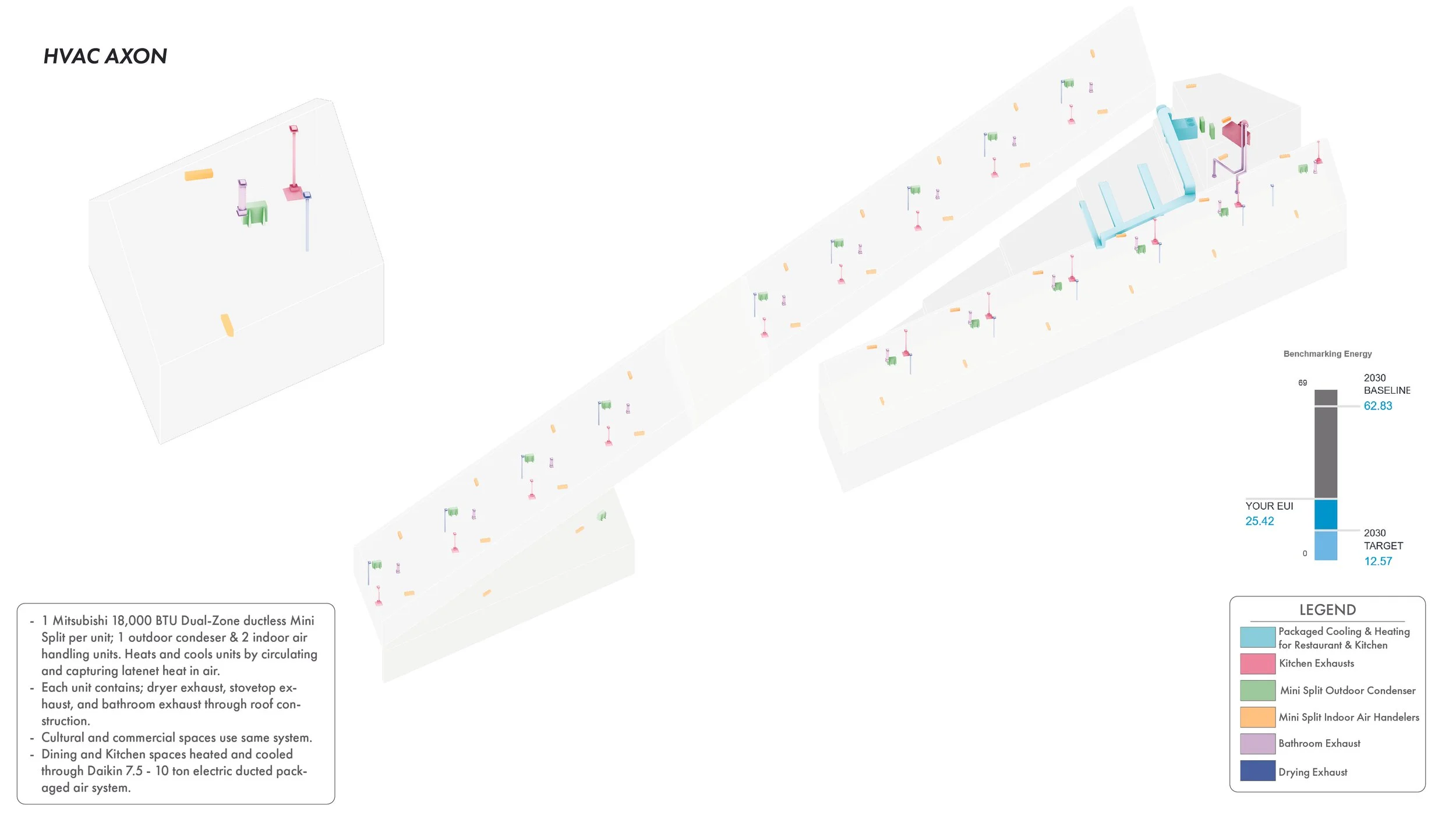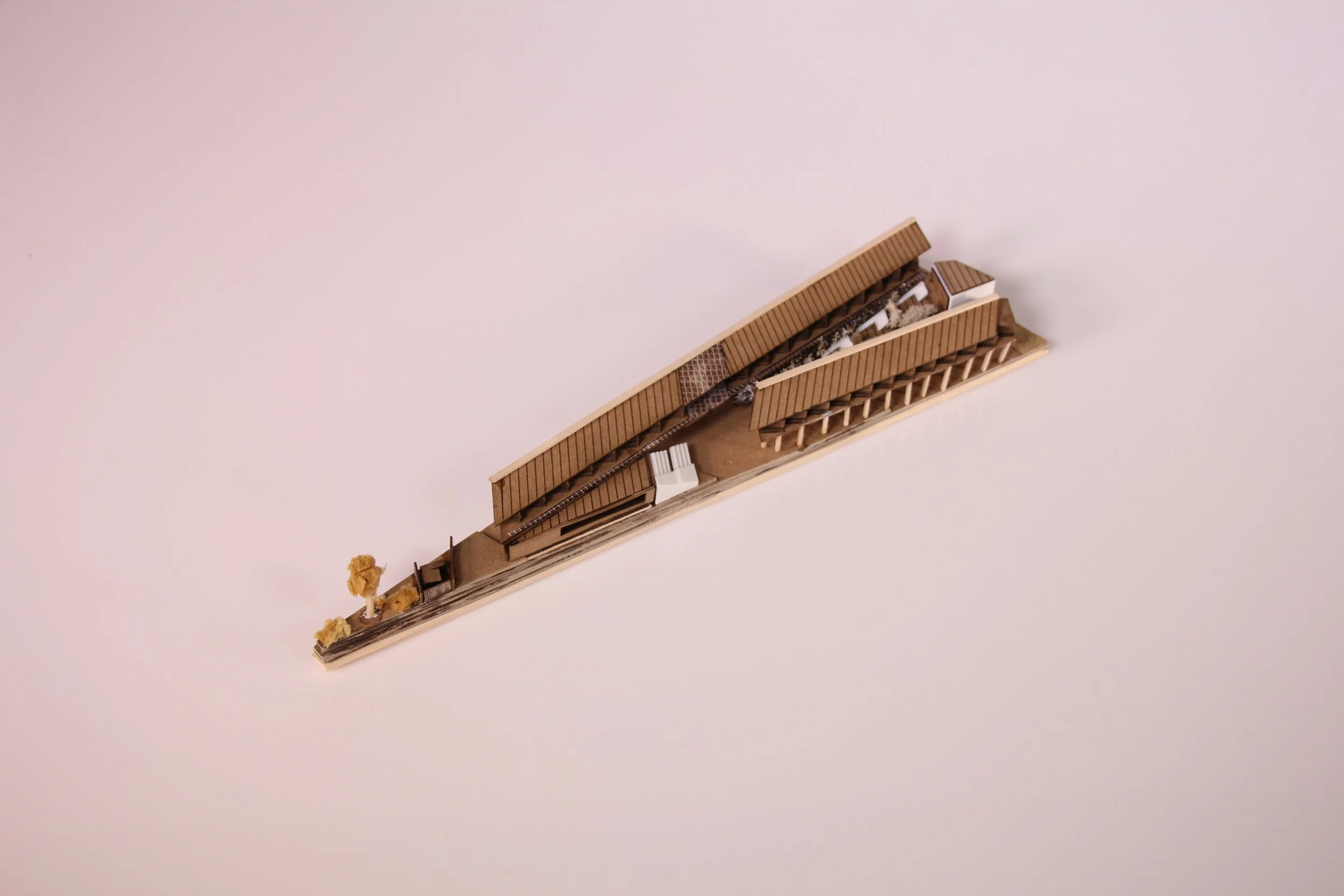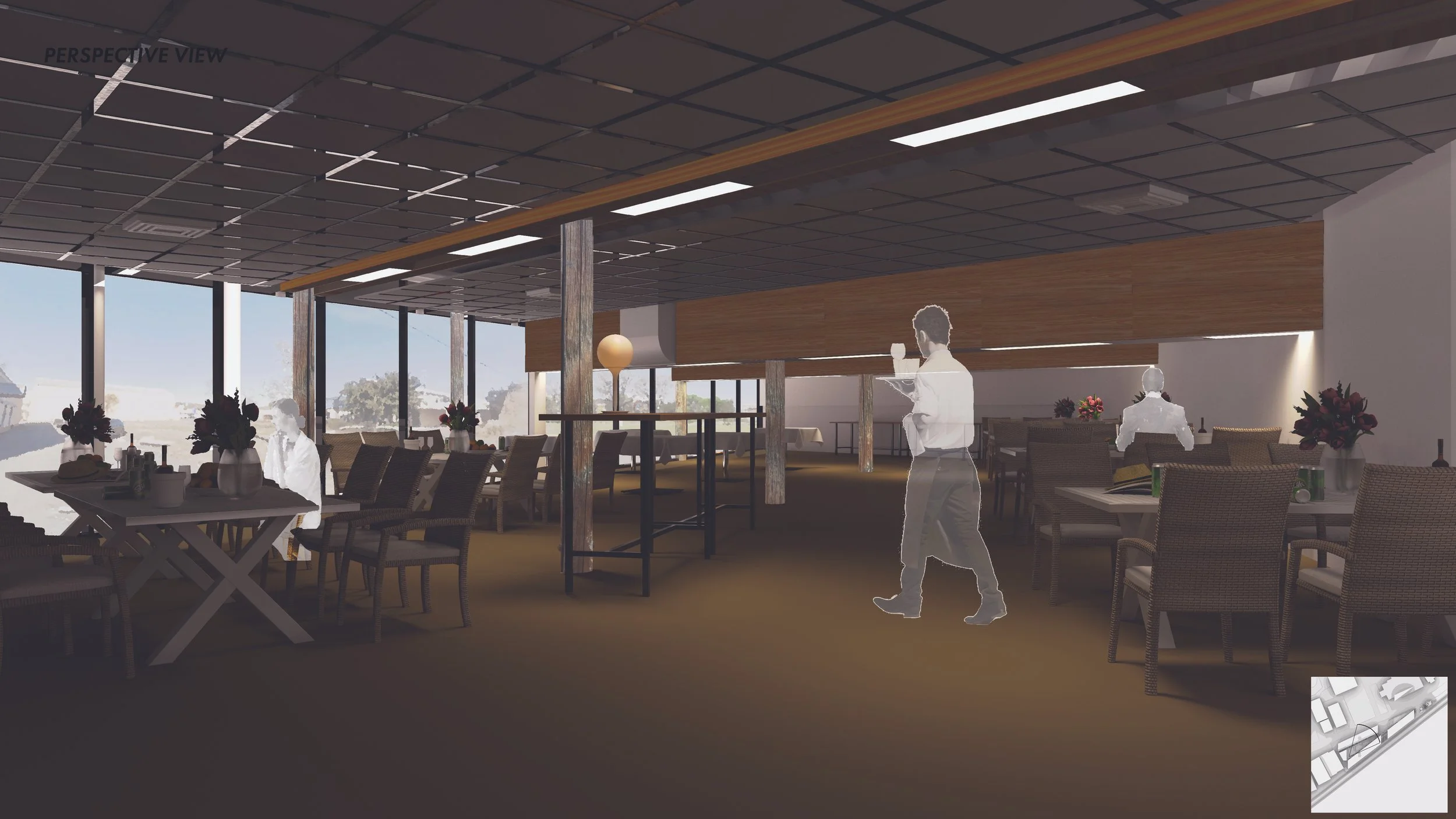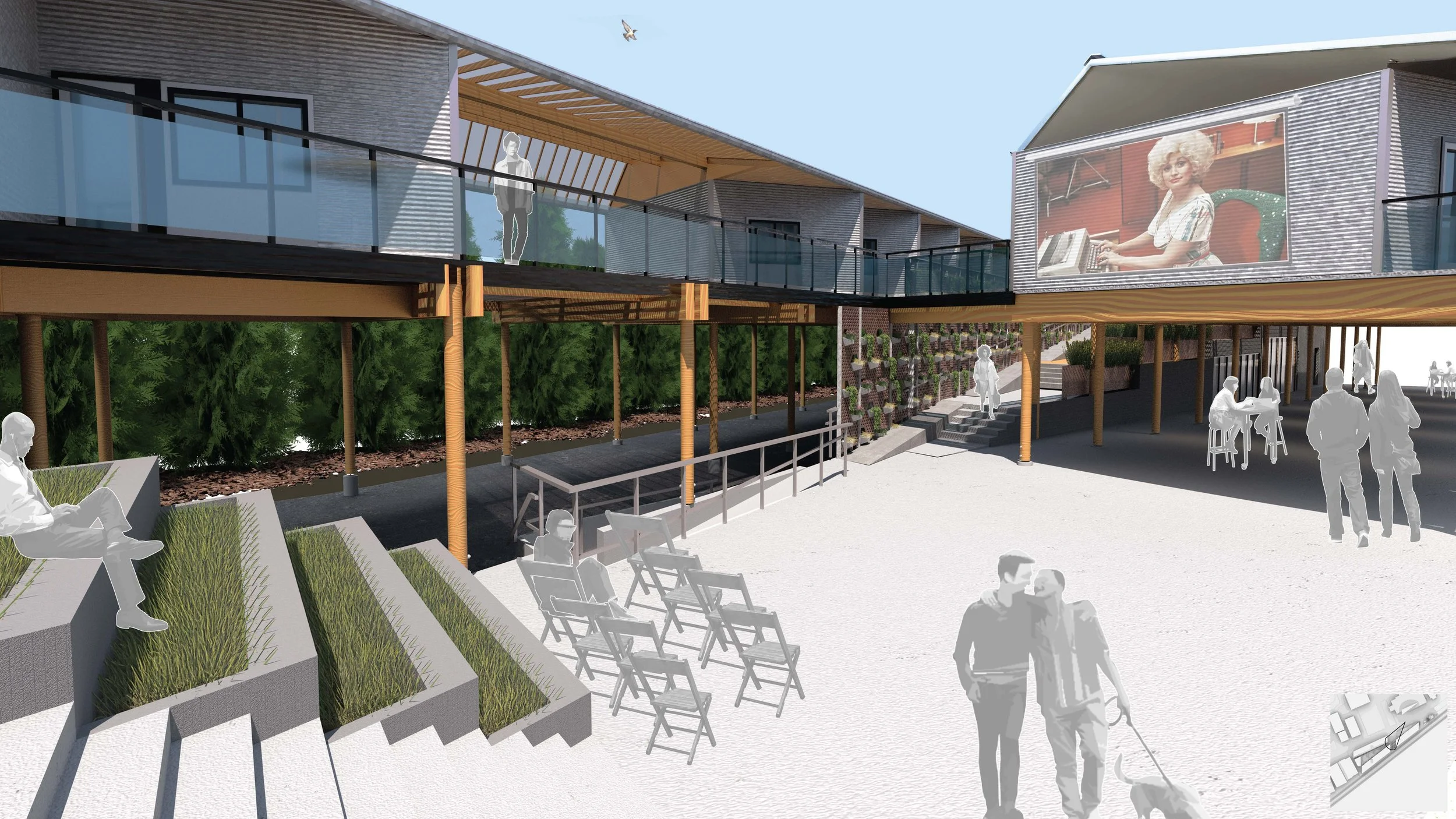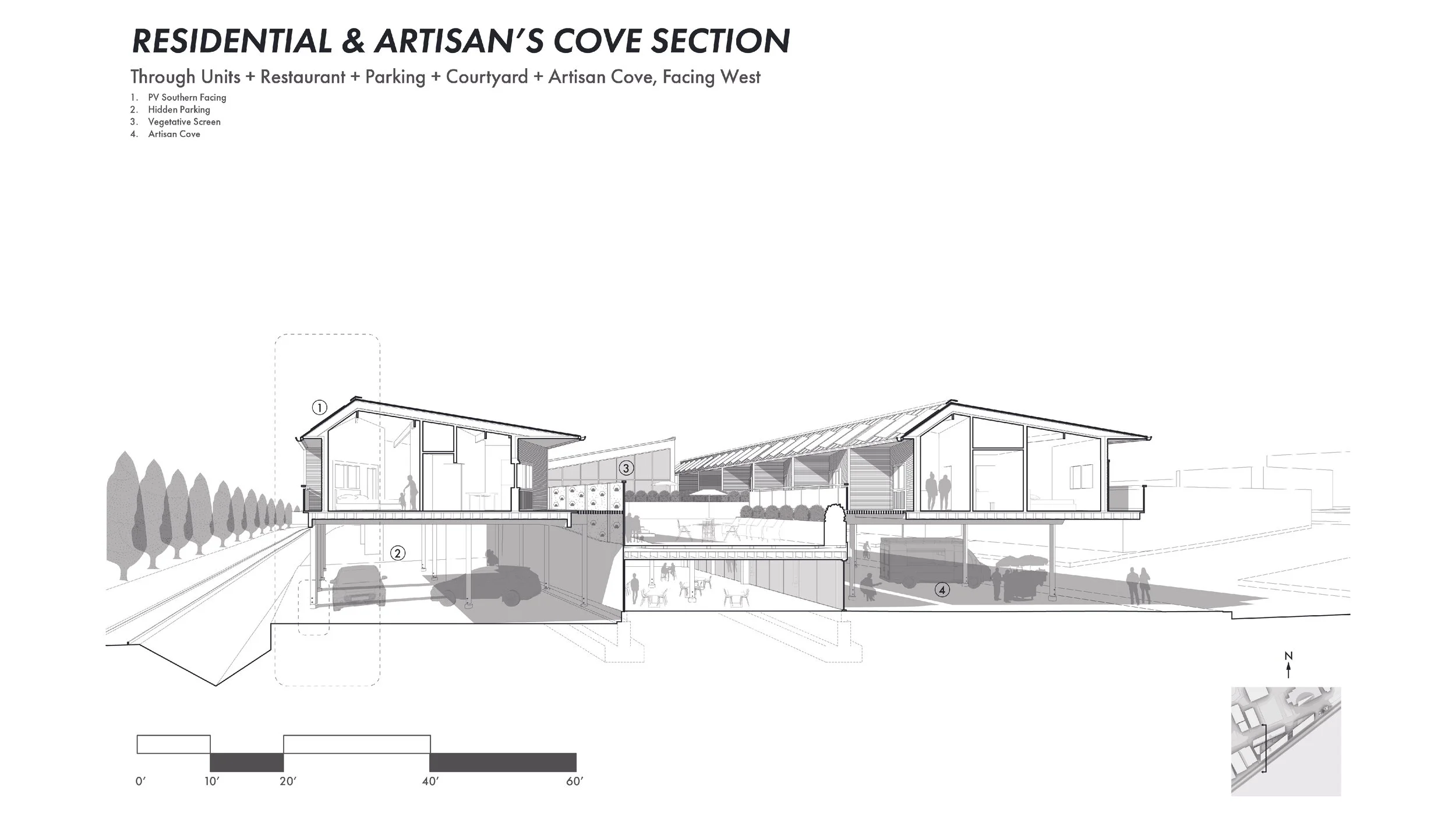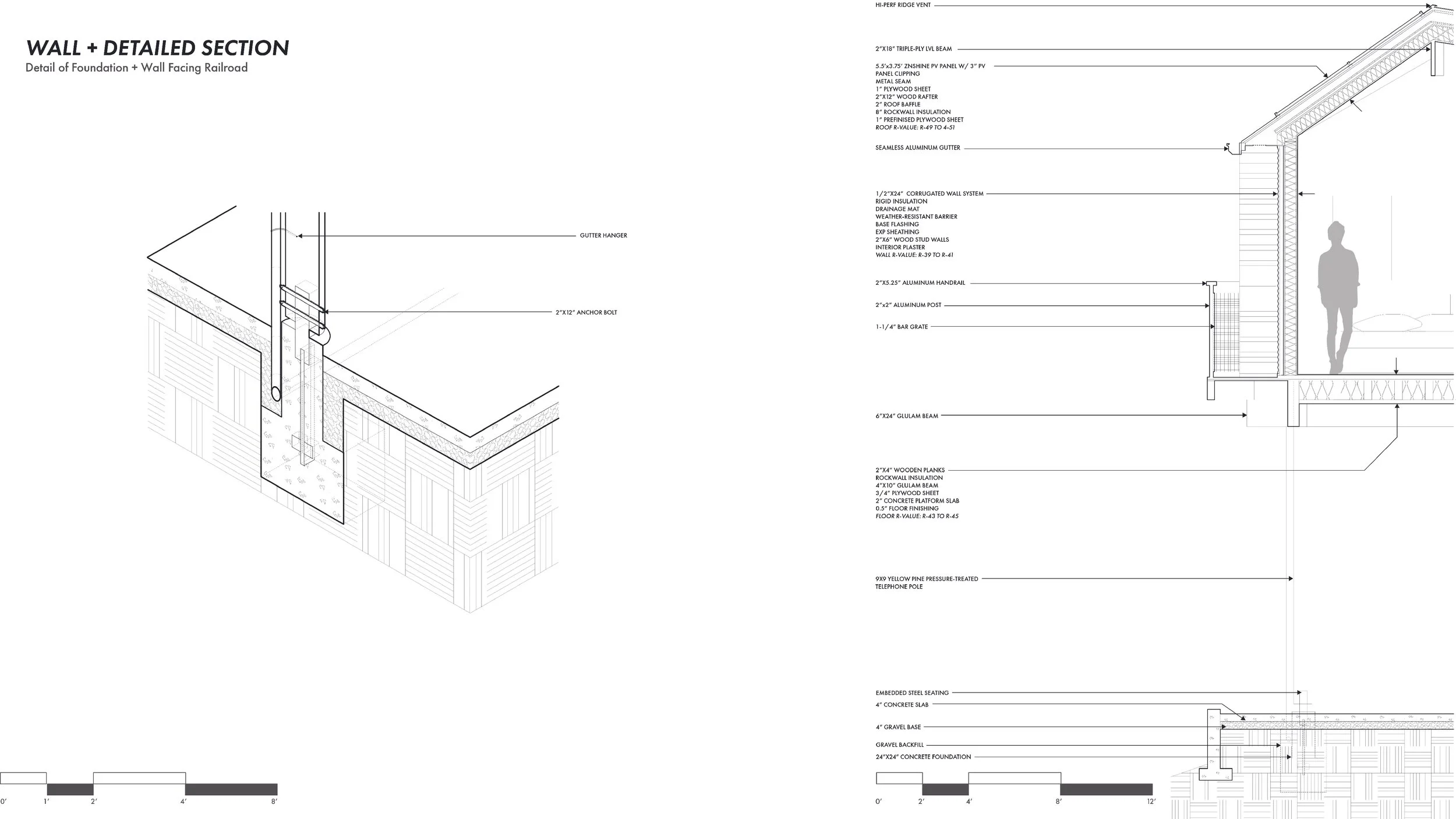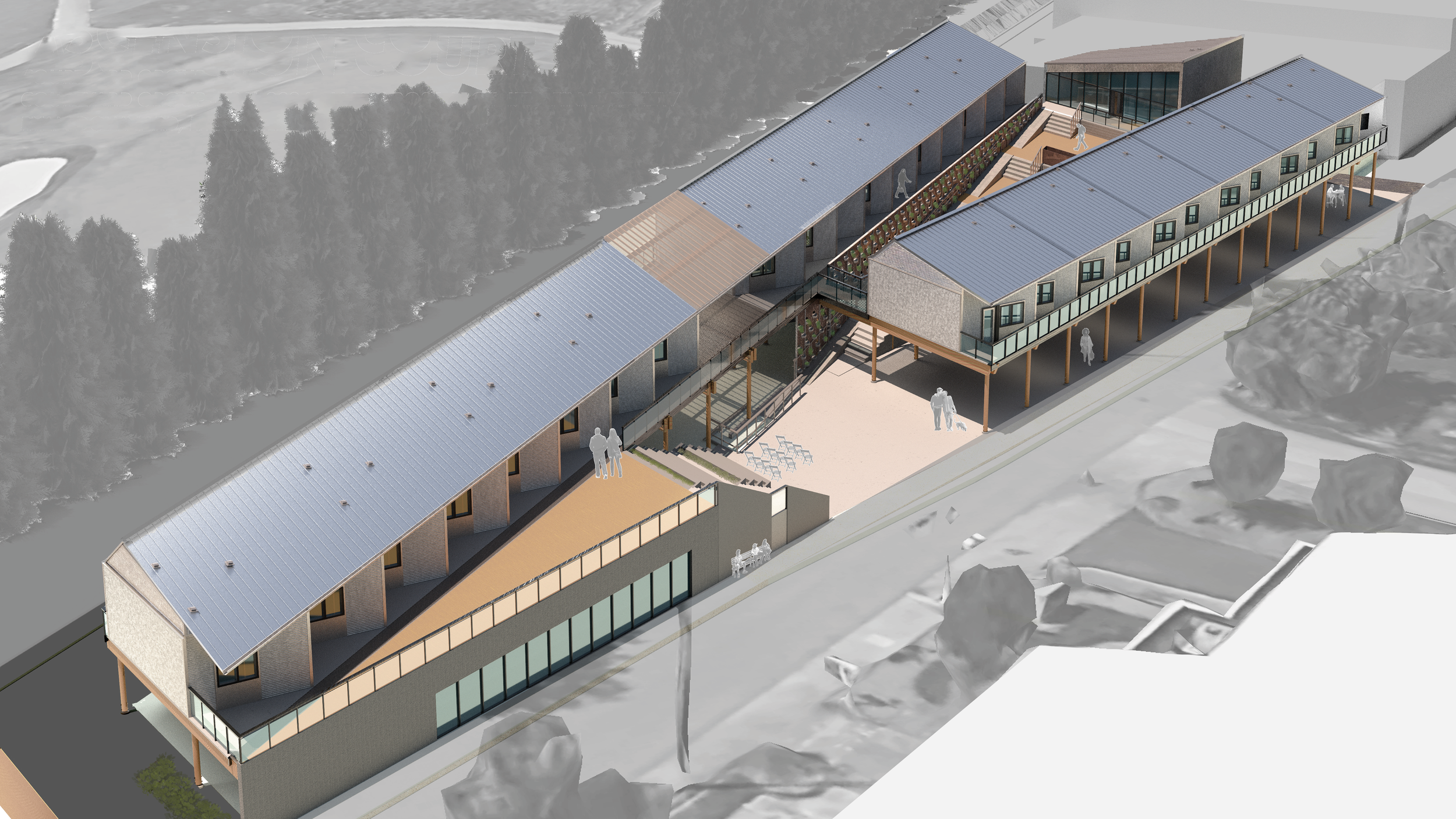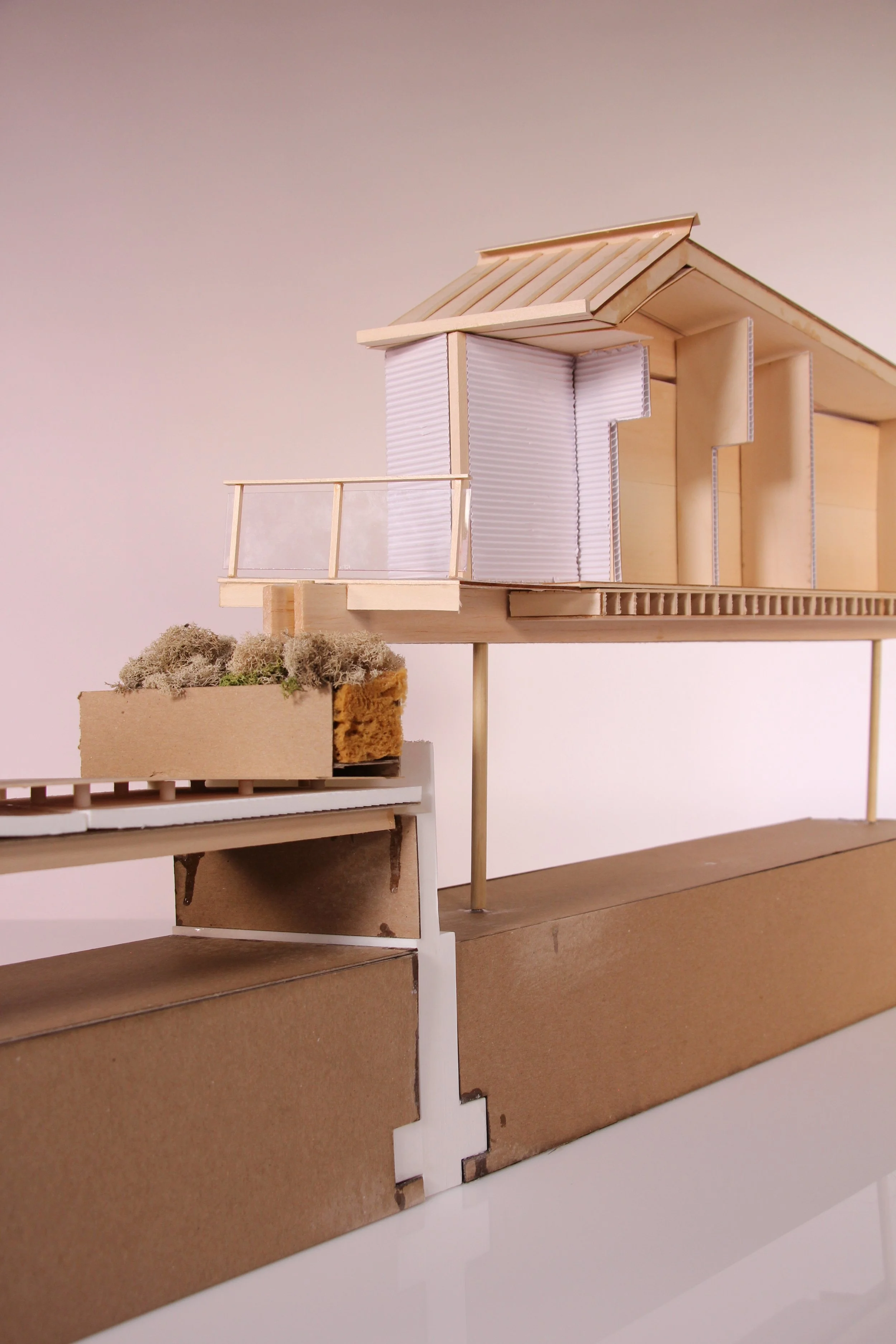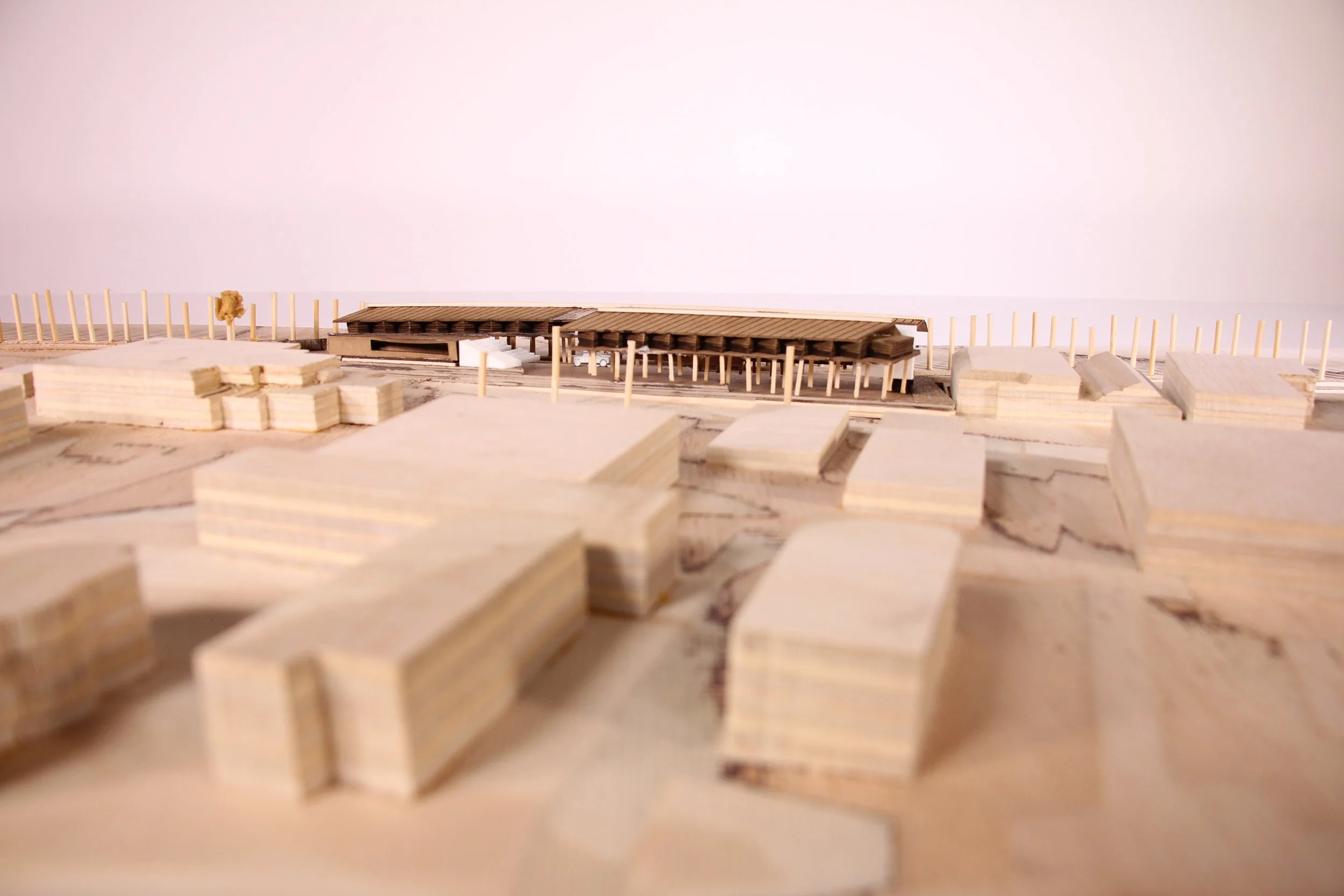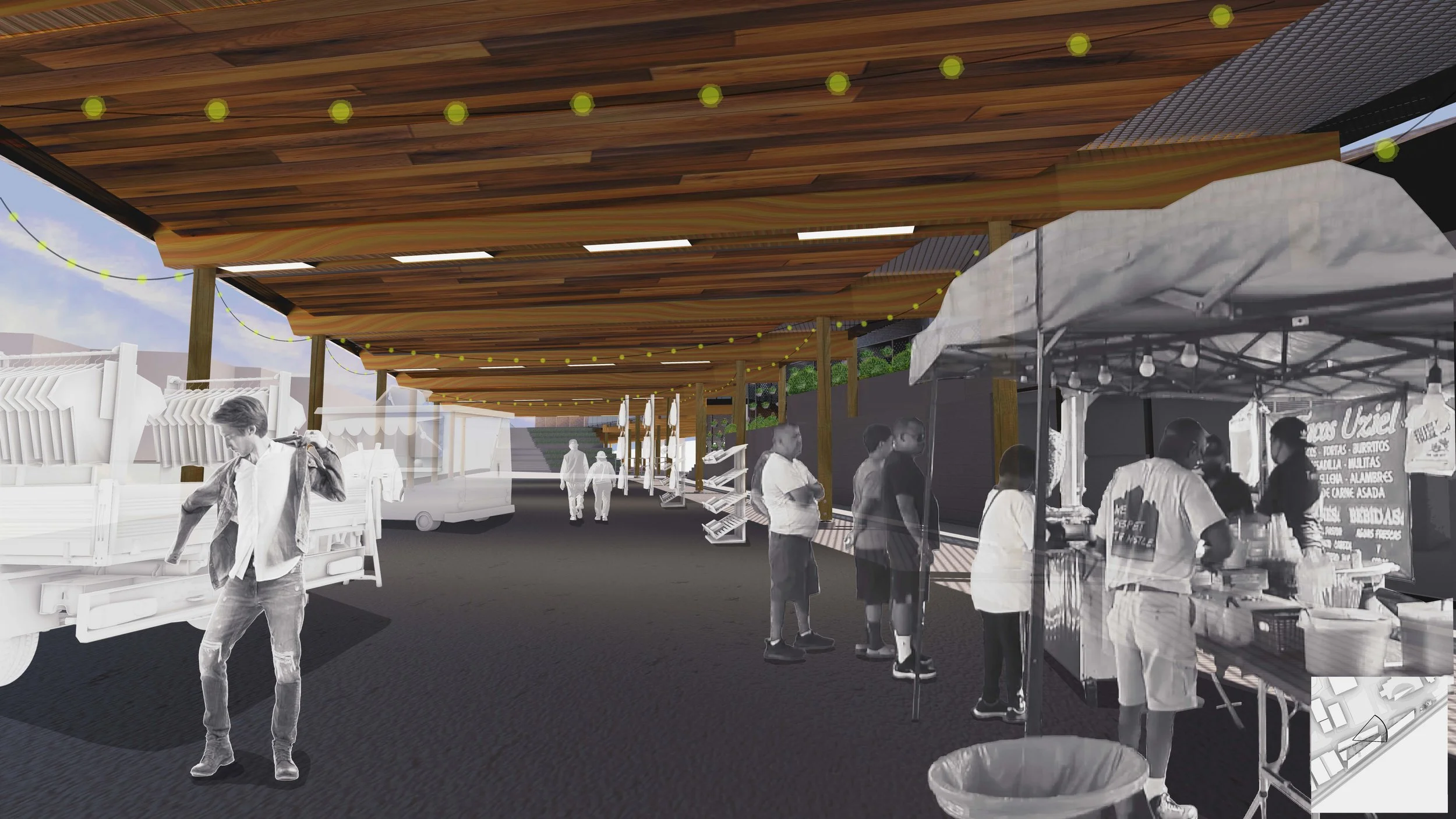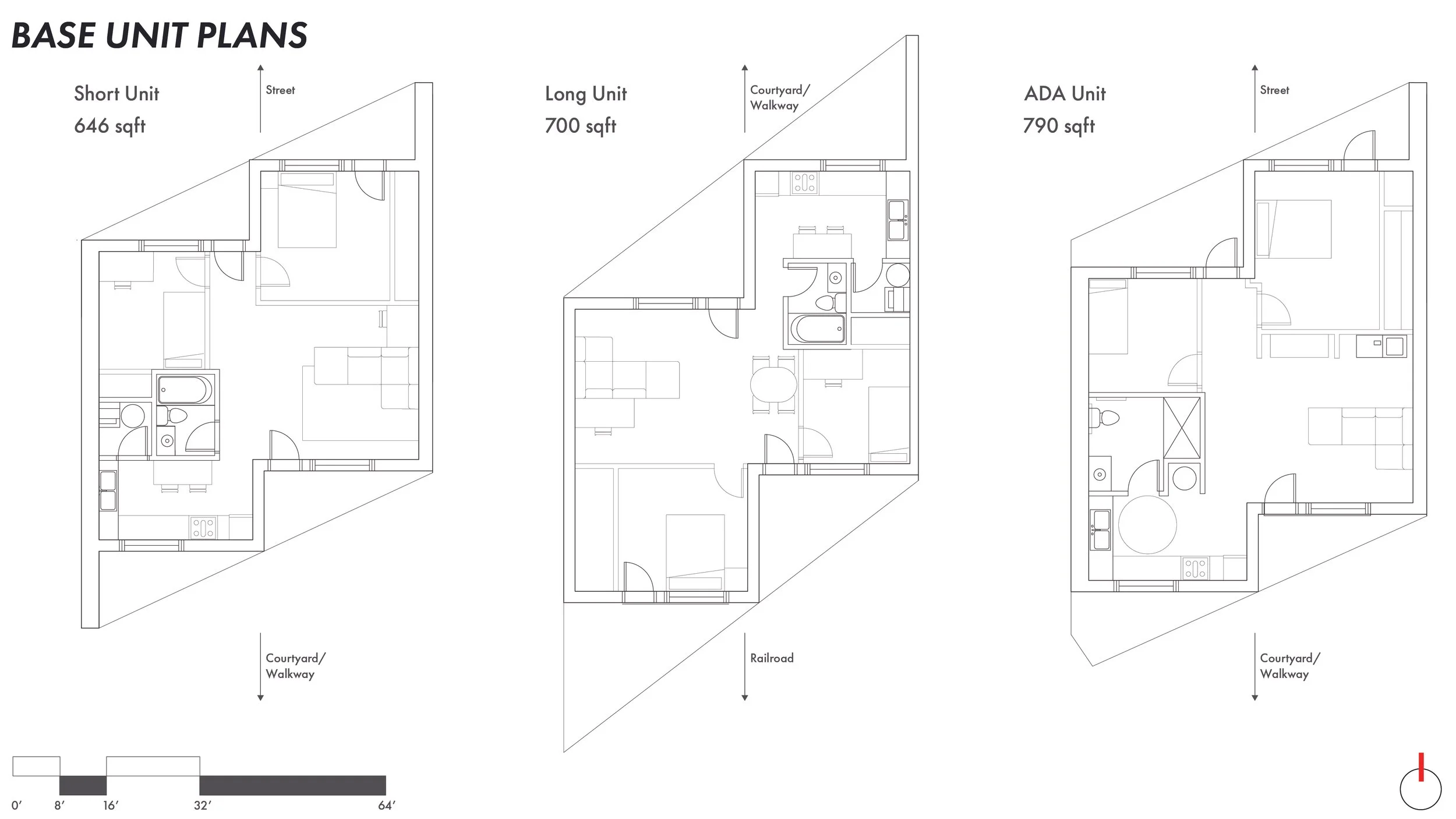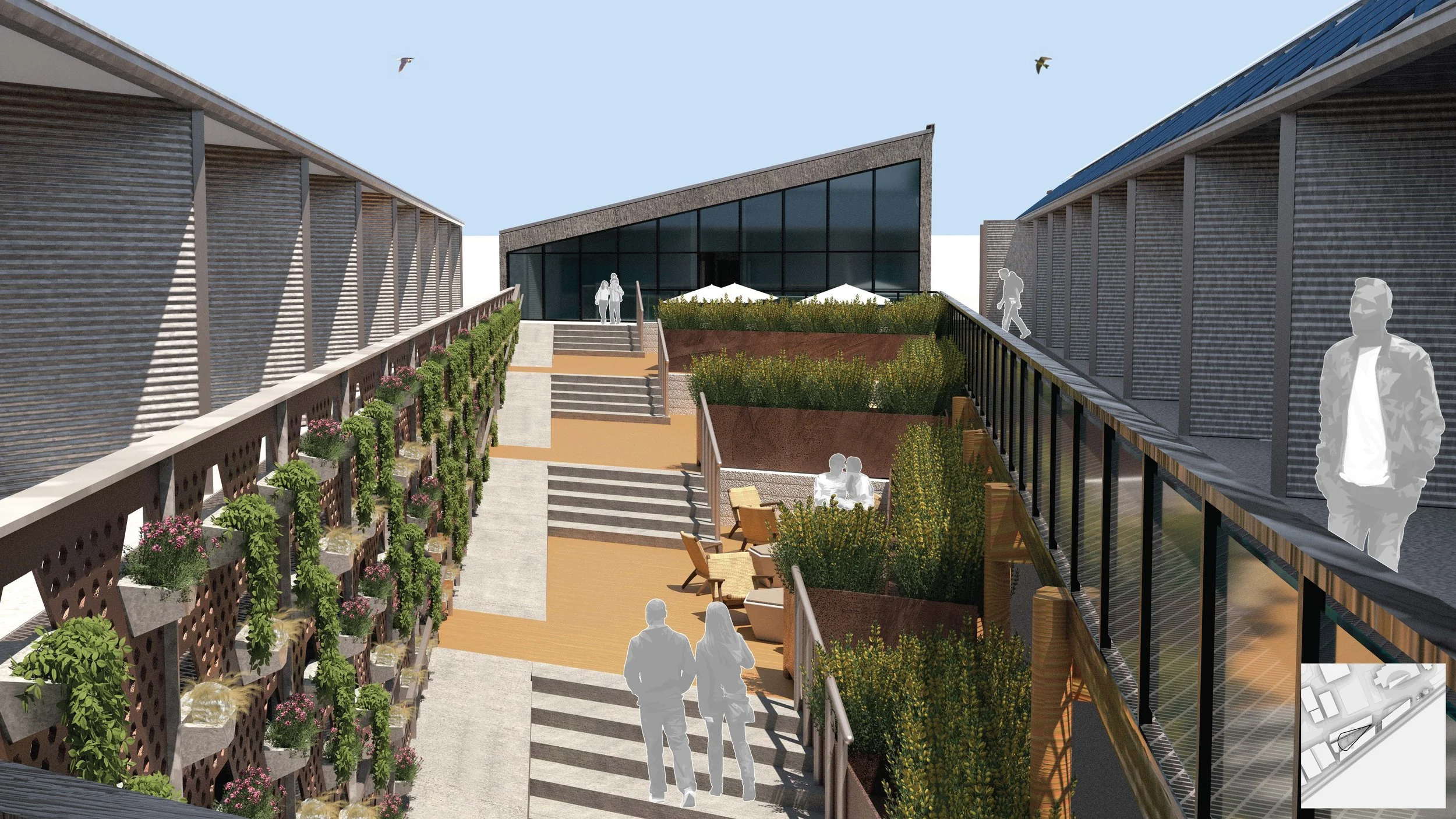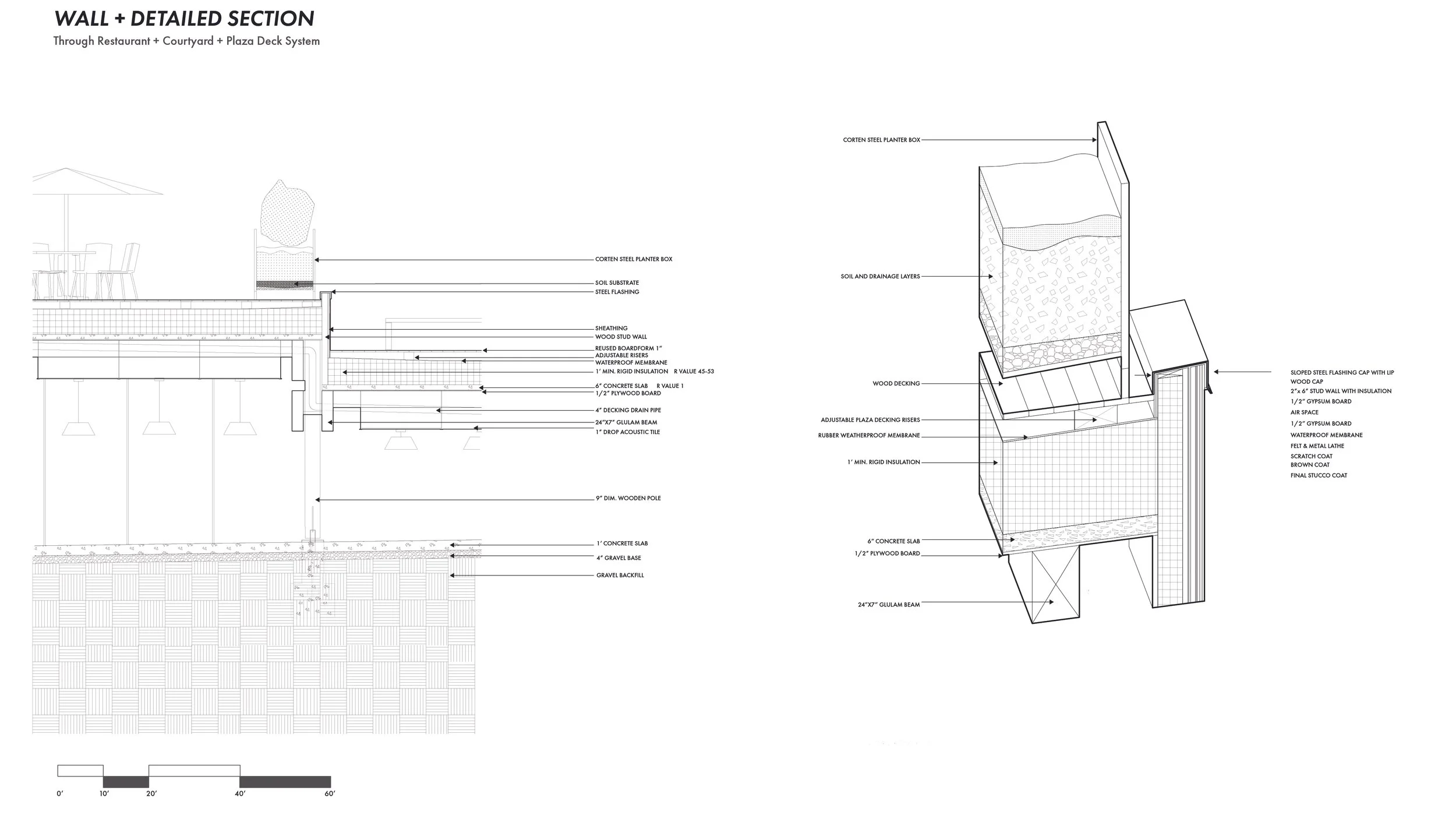ASCENSION COURT
Integrating Various Architectural Systems into Elevated “Starter Homes” for Knoxville Families
Knoxville, TN
Mixed-Use Residential
2024
Partners: Emma Tillis (etillis@vols.utk.edu)
Ryan Downard (rdownard@vols.utk.edu)
Software Used: Rhino 7, Revit, Adobe Creative Cloud, V-Ray, COVE Tool, Enscape
Ascension Court reimagines the starter home by integrating living, working, and community spaces into a cohesive residential block at the corner of Homberg Drive and South Mohican Avenue in Knoxville, Tennessee. Responding to the area’s lack of housing and infrastructure, the project centers on a stepped courtyard that defines a public-private realm while fostering connection among residents. Elevated units wrap the courtyard, while the lower levels house Artisan’s Cove—a lively mix of gallery, conference, and market spaces with a restaurant fronting the street and a private alleyway behind. Drawing inspiration from Appalachian architecture, telephone poles replace standard columns, reducing costs while accommodating plumbing and creating open ground-level spaces for parking and commerce. A sawtooth façade maximizes southern light and airflow across the irregular site, while the raised courtyard platform provides circulation and interaction between the street and upper levels. By offering residents opportunities to showcase their work, rent commercial space, and engage with the broader community, Ascension Court blends affordable housing with cultural vitality, shaping an accessible, functional, and distinctly place-based urban form.
The Homberg Drive area in Knoxville, Tennessee, lacks essential infrastructure and housing, despite its proximity to Kingston Pike, one of the city’s busiest streets. This project addresses these deficiencies by creating an accessible residential block at Homberg Drive and South Mohican Avenue. A key feature is a central courtyard, introduced in response to the fragmented street grid and the need for a defined public-private realm. This space enhances connectivity while fostering community within the development.
The section above presents a north-to-south cut through the residential units, the discreetly positioned parking at the rear, the central courtyard and restaurant, and Artisan’s Cove fronting the street. As seen, while there is a distinct difference between the lower and upper floors, the courtyard connection allows for anyone to interact with the raised platform at the center, fostering movement and engagement. Residents have the opportunity to rent out space within the commercial area beneath their homes, further encouraging community interaction and providing a platform for showcasing or selling their artwork.
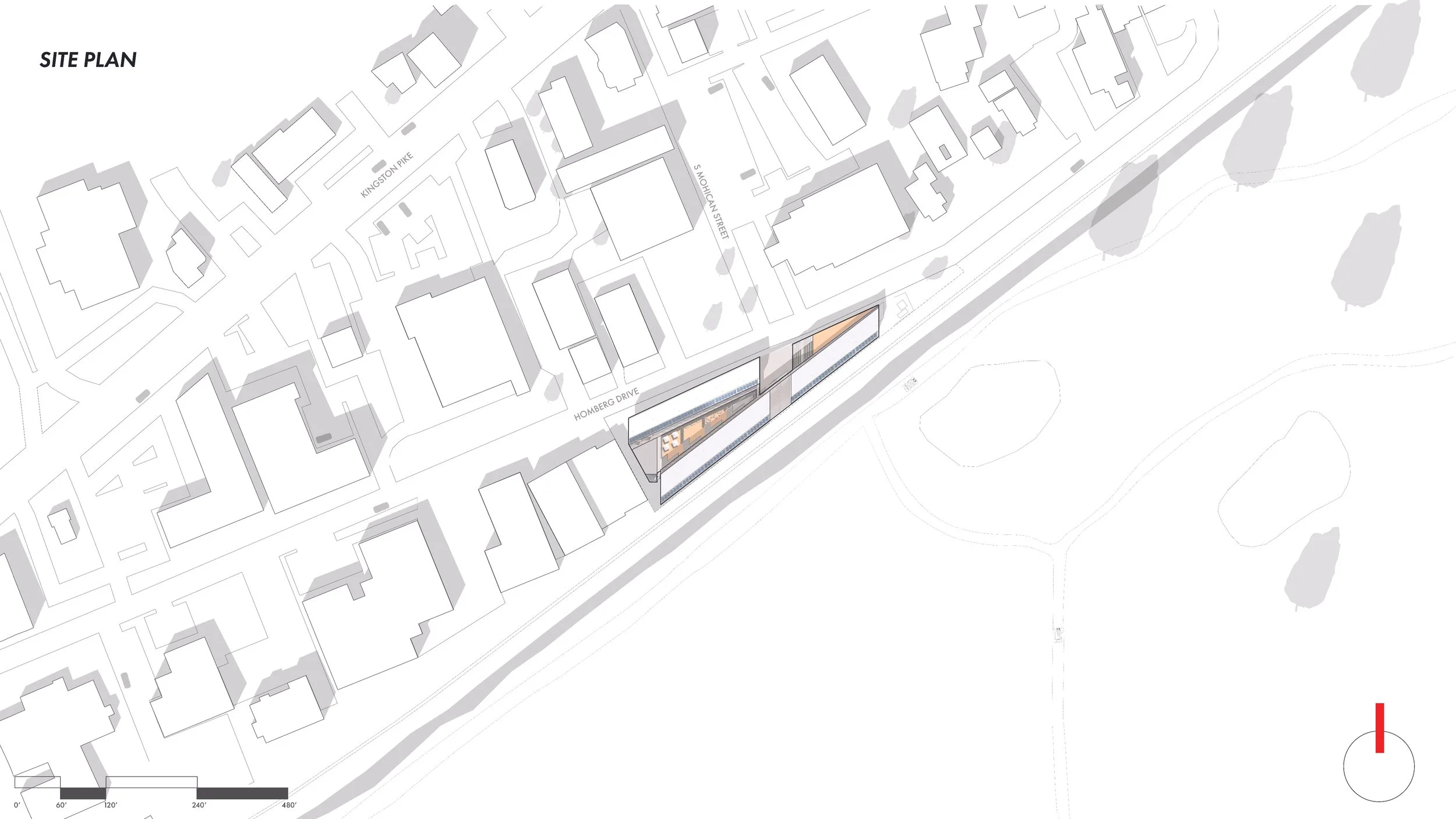

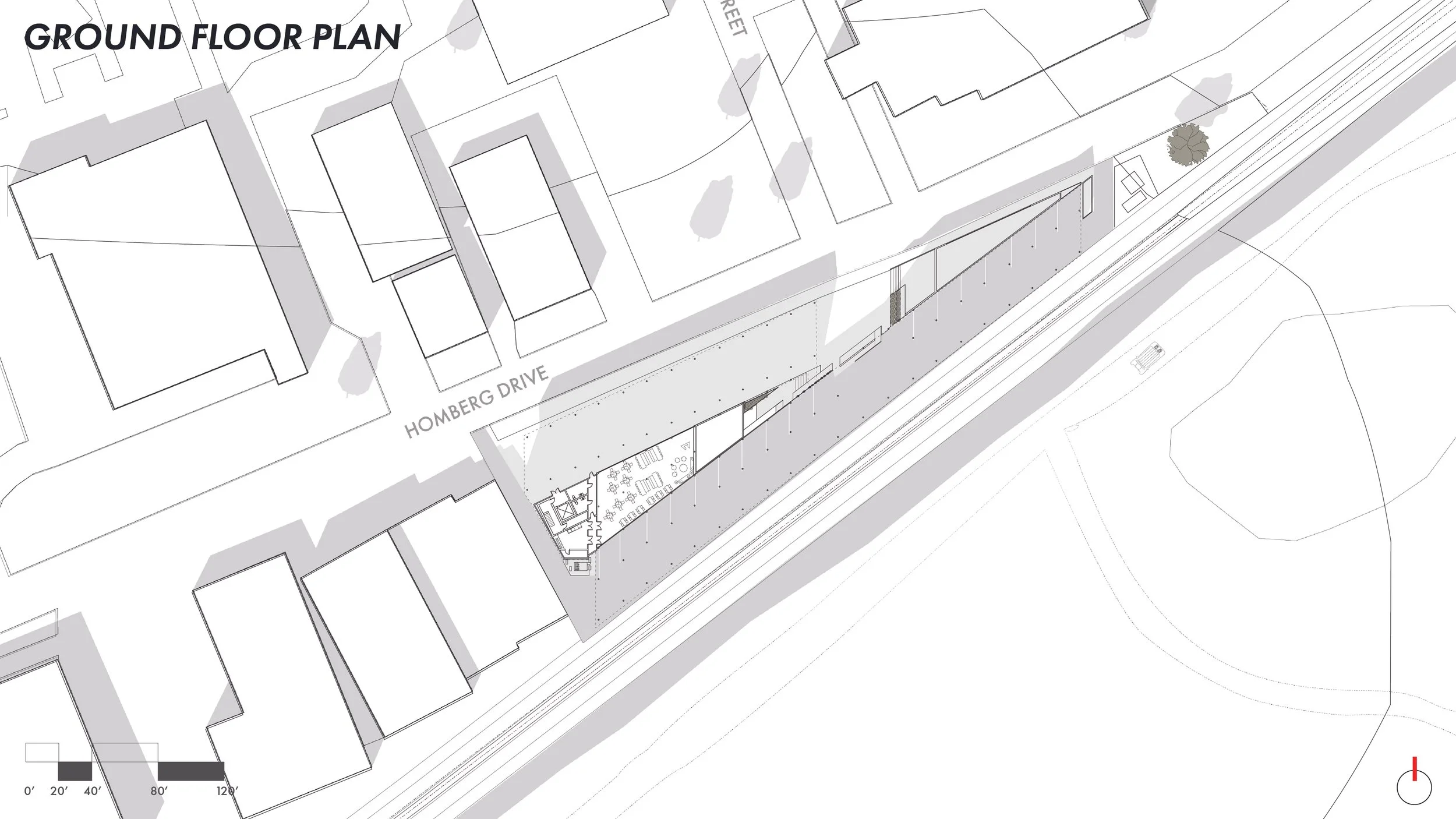
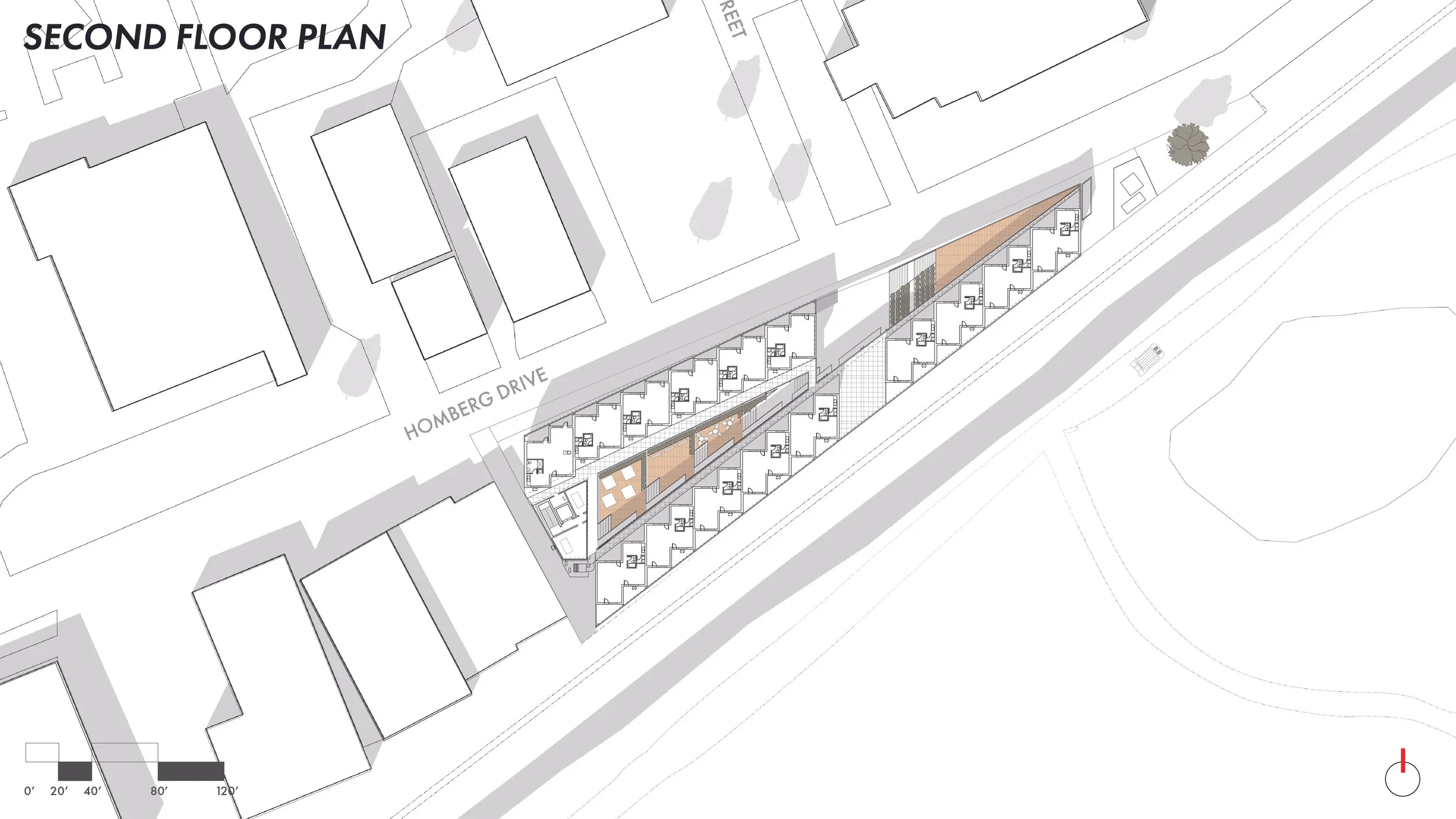
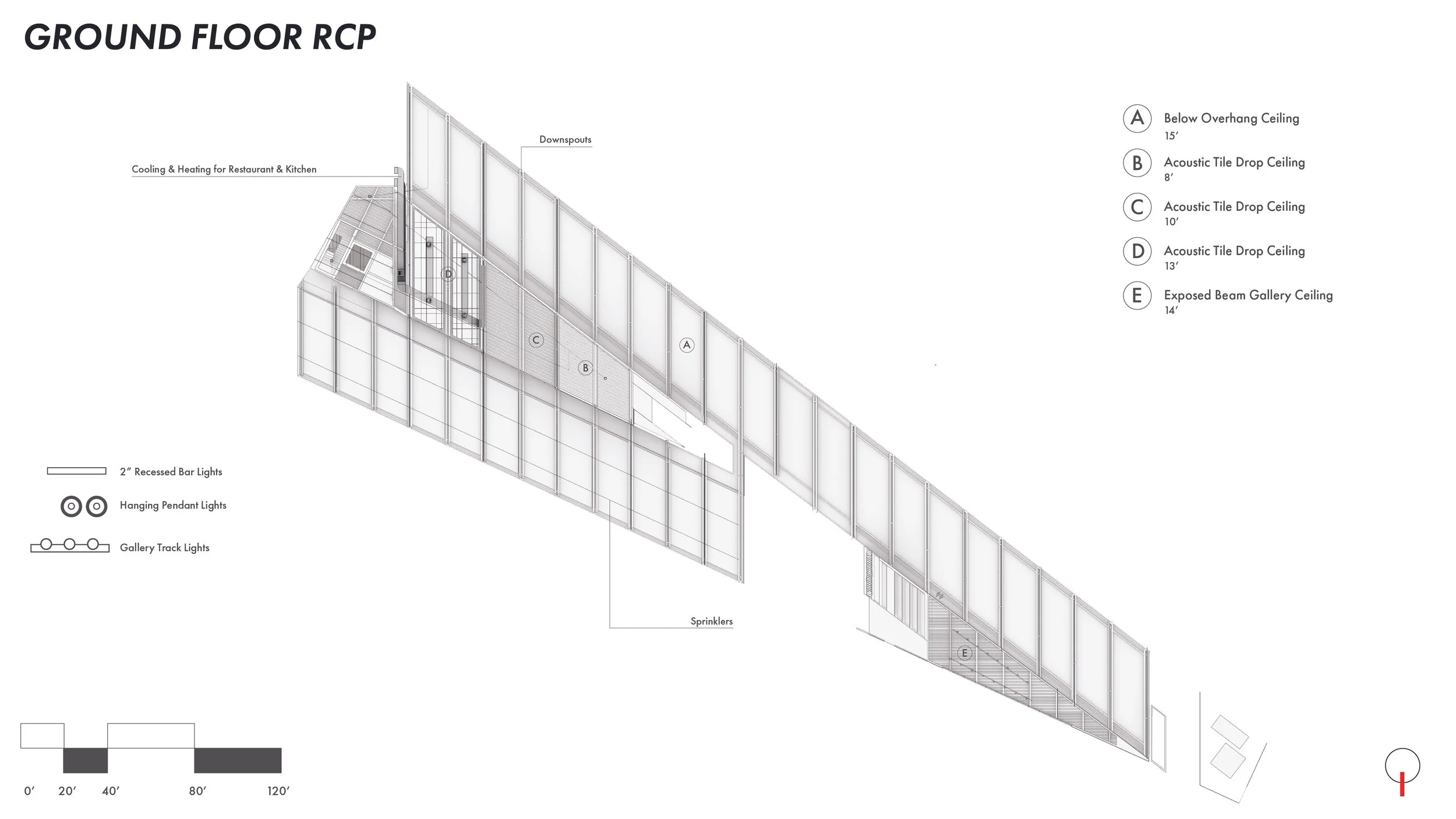
The site’s somewhat irregular shape allows for an extended west-to-east facade, maximizing sunlight on the southern exposure. A sawtooth form was chosen to optimize sun and wind conditions while maintaining a consistent column grid within the triangular layout. The central courtyard serves as a raised platform, providing circulation for residents and creating an interactive corridor that seamlessly connects both the street and the overall architecture.
